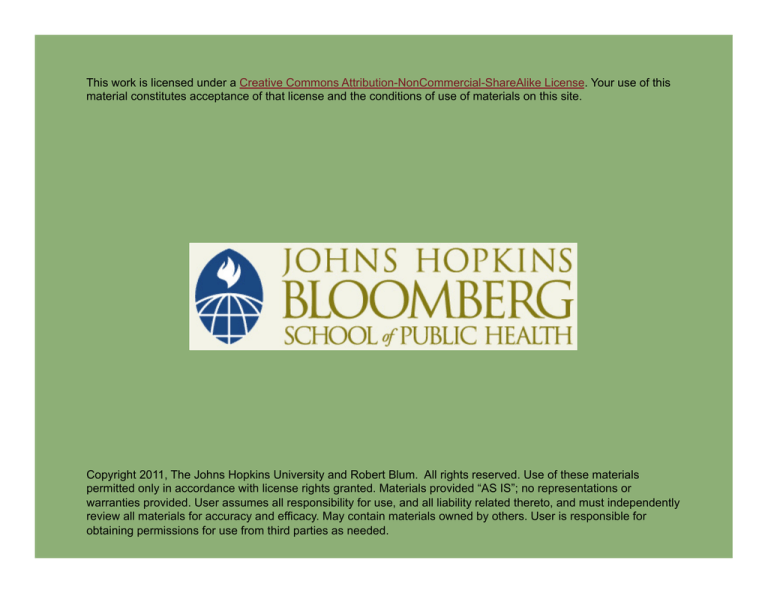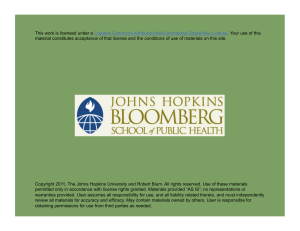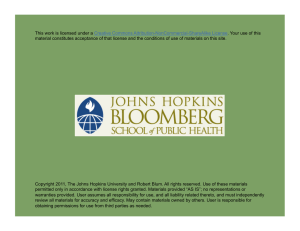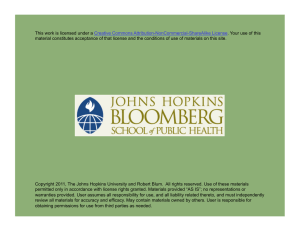
This work is licensed under a Creative Commons Attribution-NonCommercial-ShareAlike License. Your use of this
material constitutes acceptance of that license and the conditions of use of materials on this site.
Copyright 2011, The Johns Hopkins University and Robert Blum. All rights reserved. Use of these materials
permitted only in accordance with license rights granted. Materials provided “AS IS”; no representations or
warranties provided. User assumes all responsibility for use, and all liability related thereto, and must independently
review all materials for accuracy and efficacy. May contain materials owned by others. User is responsible for
obtaining permissions for use from third parties as needed.
Adolescence: A Field of Study
Robert Wm. Blum, MD, MPH, PhD
Johns Hopkins University
Outline
Definitions and historical perspective
A generation of firsts
Ecological framework
3
Section A
A Definition of Terms: An Historical Perspective
A Definition of Terms
Young People
10
24
5
A Definition of Terms
Young People
10
24
Youth
15
24
6
Terms According to WHO
Young People
10
24
Youth
24
15
Adolescence
10
19
7
Granville Stanley Hall: 1844–1924
Adolescence—its psychology
and its relations to physiology,
anthropology, sociology, sex,
crime, religion, and education
(1904)
Hall established an experimental
psychology laboratory at Johns
Hopkins University in 1882
8
Concept of Adolescence
Why was the concept of adolescence “invented” in 1904?
9
Why? Why Then?
Rousseau and a shift in the philosophy of childhood
10
Why? Why Then?
Rousseau and a shift in the philosophy of childhood
Industrial revolution
11
Why? Why Then?
Rousseau and a shift in the philosophy of childhood
Industrial revolution
Mandatory education
12
Why? Why Then?
Rousseau and a shift in the philosophy of childhood
Industrial revolution
Mandatory education
Age segregation and the evolution of a “youth culture”
13



